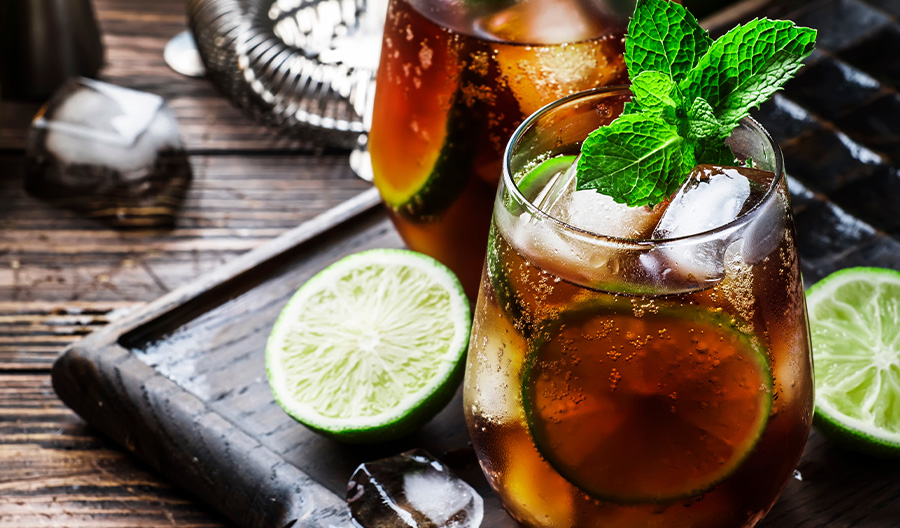Rum can be a sticky wicket to wrap your head around. Versions that have spent time in a barrel can then be rendered clear through filtering, leading unsuspecting consumers to think they’re light-bodied, Mojito-ready silver rum, while unaged bottles can gain a tawny or amber hue thanks to the addition of caramel color.
And then, just to confuse us all, there’s black rum.
So what exactly is it? In “Smuggler’s Cove: Exotic Cocktails, Rum and the Cult of Tiki” (Ten Speed Press, $30), author Martin Cate writes, “Black rum was designed to impart the appearance of age to rums intended for mixing.”
It can be distilled in a pot, column or a combination of the two, usually sees little if any age and has caramel, molasses or both added to it, meaning it can appear shades darker in the bottle than a rum that has been aged in charred barrels for decades.
“It remains, in my mind, the only style of rum you should refer to by color, because the addition of color itself is what defines the category,” Cate writes. The misunderstanding, he believes, stems from consumers equating a darker beverage as an older one (similar to how uninformed oenophiles might consider a transparent Grand Cru red Burgundy to be of inferior quality to a cheap but opaque Napa cabernet).
So since black rum can actually be fairly light in body, Cate thinks it works better with citrus than in boozy stirred drinks where it’s often overwhelmed.
The category was popularized, he points out, in the post-Prohibition era by the Myers’s corporation, when color was added to impart a perception of age and richness of flavor. The spirit was marketed as a good base for punch recipes (it’s pretty great in a Hurricane). Today, the category is represented by pot-still bottles and blended ones.

But it all depends on who you ask. Compared to traditional aged light and dark rums, black rum has a richer, darker and more aromatic flavor profile and is medium- to full-bodied in its mouthfeel. With flavors of robust licorice and molasses, bartenders reach for it most often as a finishing element or float in Tiki drinks and punches made with lime, pineapple, guava, orange or other juices.
In the glass, it tastes close to a dark Jamaican rum, albeit sweeter and denser because of the addition of glycerin or other sweetening or darkening agents. He submits that it can be a great substitute in cocktails that call for dark rum, though, or used as an accent or float.
Black rum is a syllogism - All black rums are dark rums, but not all dark rums are black. Black rum is darker than even a typical dark rum, and has a thicker, sweeter texture with a strong flavor of molasses. It may or be not be made from blackstrap molasses (even if it says “Blackstrap Rum” right on the label, since there is no official definition of blackstrap rum).
It can be described as smooth, creamy and complex, with notes of molasses, fruit and brown sugar. It works in classic drinks like the Manhattan or Old Fashioned and is the essential ingredient (along with ginger beer and lime) in the classic summertime cocktail, the Dark ’n Stormy.
In the end, the takeaway may be to consider black rum the liquor version of what’s referred to in business as the Iron Triangle, where you are given the options of fast, cheap and good and told you are allowed to pick two. Familiarize yourself with reputable distillers, think about how you are planning on mixing it, and decide whether or not you are willing to give up barrel aging and accept color and flavor gleaned from shortcuts.
Imbiber, beware: It’s not all, um, black and white.

